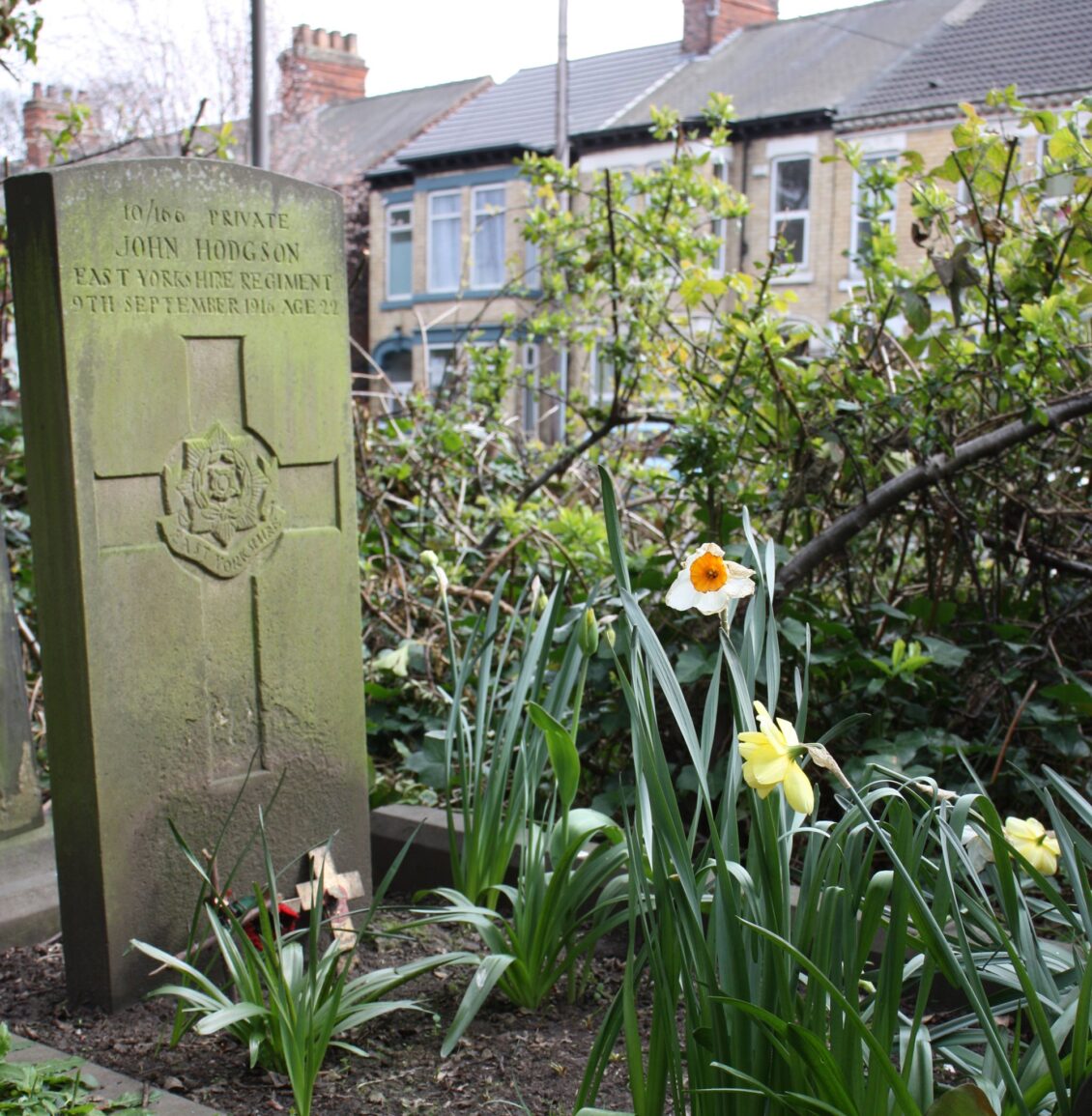The recent unveiling of the headstone commemorating the last war grave headstone removed from the site last year occurred on the 14th July this year. It seemed therefore appropriate to tell the story of the lost war graves headstones now.
The reason behind the design and implementation of the classic war grave headstone is told more fully in The War Dead of Hull General Cemetery book. I’m sure you can still find it available on Amazon. Suffice to say that Hull General Cemetery had a number of them erected after the Great War. More arrived after the Second World War. In all there were 28 of them.
Monitoring
One of the statutory duties laid upon the War Grave Commission is to monitor the sites that hold such stones. It has a statutory power to remove stones from sites that it feels may be at risk. That risk is deemed to be high if the headstones are at risk of damage. Surprisingly this role may even stretch overseas. I know that the Commission closely monitored the burial sites of the Commonwealth armed forces from both World Wars in Iraq and Libya in recent years.
Closer to home it took a close interest in how the maintenance of Hull General Cemetery began to decline after the Second World War. On the 11th July 1960 the Hull General Cemetery Company received a letter from the War Graves Commission. This letter informed the Company that the headstones would be removed. The letter stated that,
‘Their purpose in doing this is to substitute them for small blocks in a wall of remembrance being built in the Northern Cemetery, and they want to get all the commemoration tablets in one place in Hull if this can be managed, mainly to save maintenance costs for which they are responsible.’
Other cemeteries affected
This reason was given, I believe, in an attempt to preserve the pride of the cemeteries affected. Hull General Cemetery was the largest one affected but other sites in Hull had their headstones removed too. These other sites were mainly church run ones. Thus Sculcoates, Drypool and Division Road had headstones removed from their jurisdiction. These individuals are all commemorated on the plaques in Northern Cemetery.
However, no action was taken for a considerable time. The Company had no reason to hurry this development, nor did they have the money to remove the stones themselves. The War Graves Commission had no such excuse. Yet, surprisingly, nothing then happened for approximately five years.
The Final Act
The matter surfaced again in the October 1965. Once again it took the form of a letter. However this showed that developments had been occurring in the background. A written affidavit was taken out, presumably by the War Graves Commission.
‘By this written memorandum the Board of Directors resolves that the Secretary be authorised to affix the common seal of the Company to a Deed of Covenant, respecting twenty-eight Commonwealth War burials, made between the Company of the one part and the Commonwealth War Graves Commission of the other part.’
With this document the removal of the headstones was complete…or was it?

As we now know one solitary headstone was left. We have no information as to why it was left. It stood there at the base of the Hodgson family grave for over 50 years after the rest had been removed. It harmed no one and was relatively unobtrusive. And then one day in 2022 it disappeared. The story of that event has been discussed here and on the Facebook site so I don’t need to contribute to that debate.
With the re-introduction of the plaque above commemorating Private Hodgson’s death the story hopefully comes to an end.

Pete Lowden is a member of the Friends of Hull General Cemetery committee which is committed to reclaiming the cemetery and returning it back to a community resource.

